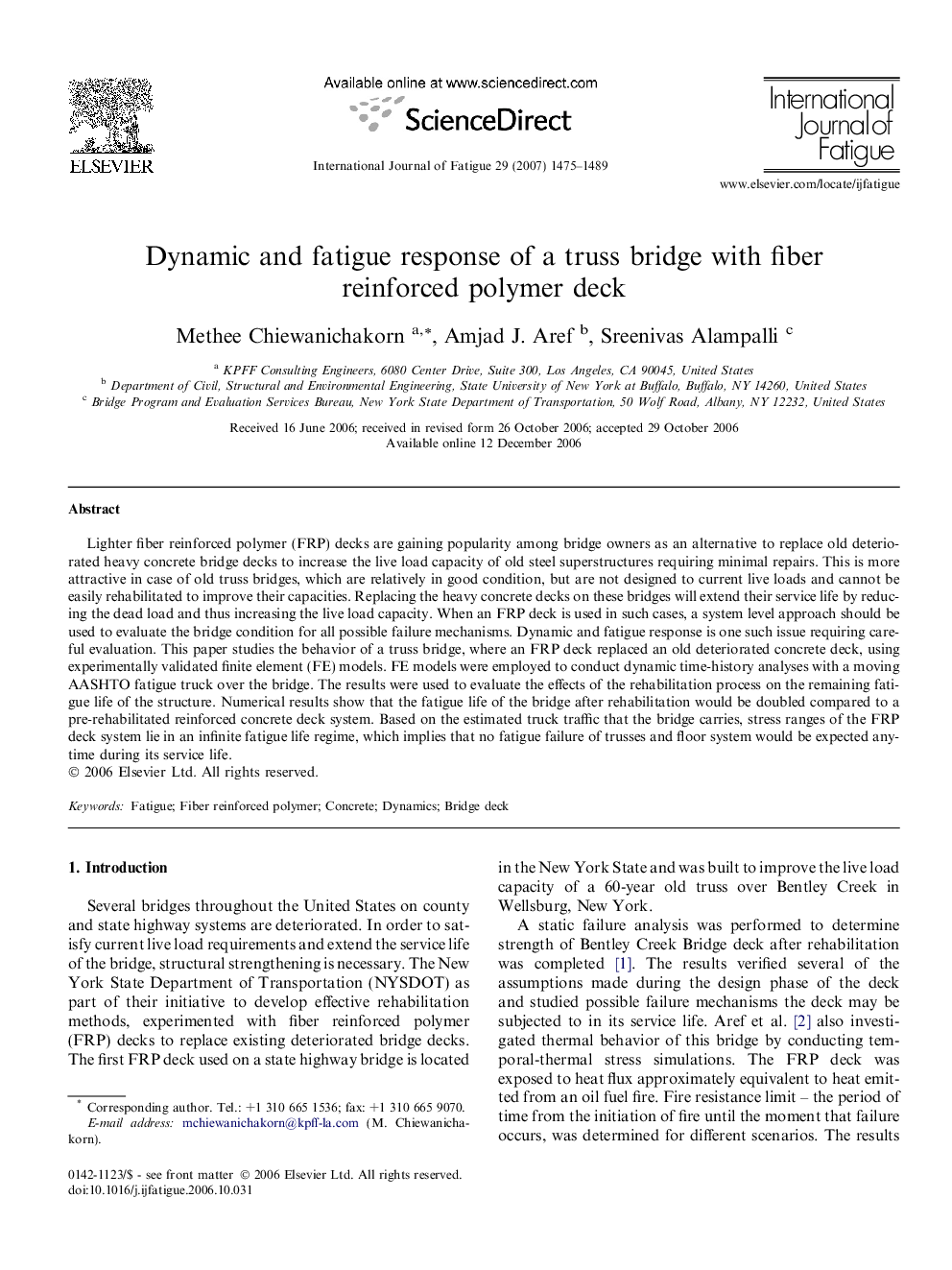| Article ID | Journal | Published Year | Pages | File Type |
|---|---|---|---|---|
| 775917 | International Journal of Fatigue | 2007 | 15 Pages |
Lighter fiber reinforced polymer (FRP) decks are gaining popularity among bridge owners as an alternative to replace old deteriorated heavy concrete bridge decks to increase the live load capacity of old steel superstructures requiring minimal repairs. This is more attractive in case of old truss bridges, which are relatively in good condition, but are not designed to current live loads and cannot be easily rehabilitated to improve their capacities. Replacing the heavy concrete decks on these bridges will extend their service life by reducing the dead load and thus increasing the live load capacity. When an FRP deck is used in such cases, a system level approach should be used to evaluate the bridge condition for all possible failure mechanisms. Dynamic and fatigue response is one such issue requiring careful evaluation. This paper studies the behavior of a truss bridge, where an FRP deck replaced an old deteriorated concrete deck, using experimentally validated finite element (FE) models. FE models were employed to conduct dynamic time-history analyses with a moving AASHTO fatigue truck over the bridge. The results were used to evaluate the effects of the rehabilitation process on the remaining fatigue life of the structure. Numerical results show that the fatigue life of the bridge after rehabilitation would be doubled compared to a pre-rehabilitated reinforced concrete deck system. Based on the estimated truck traffic that the bridge carries, stress ranges of the FRP deck system lie in an infinite fatigue life regime, which implies that no fatigue failure of trusses and floor system would be expected anytime during its service life.
